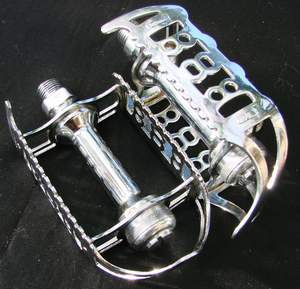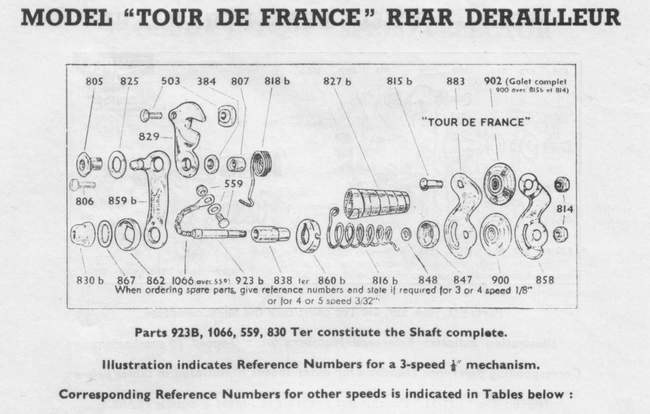Restoring Pedals
Posted: Monday 21st September 2020
In response to an enquiry from me, Peter describes the painstaking way that he restores pedals – when they are done they look as good as new. Whether all platers would be as cooperative I don’t know. See right for the finished article – Webmaster
Here is the procedure I use for re-chroming pedals. As you see, they are plated complete but after being dismantled for cleaning and polishing:
Pedals are firstly dismantled in the normal way and then degreased using Carplan Tetroclean. Next they are derusted using Rustins Rust Remover. The threads and bearing surfaces are cleaned out with a wire brush on a Dremel: this is important as platers tend to polish threads clean and you can lose thread if you don’t do it yourself. The next part is to dismantle the cage, which is the only way that they can be repolished inside and out.

I use a Dremel SpeedClic cut-off disc, as flat as possible to the plate, and remove just enough of the burr to be able to prise the plates apart, for which I use a modified auto disc brake pad separator. Once they are separated I check that they are the correct shape and then remove about 3 file strokes from each shoulder of the tenons in order to replace the metal lost in separation. Everything then goes into an ultrasonic cleaner to make sure they are as clean as I can possibly get them before the plates and barrels then go off to the platers for them to polish. When they come back it is easy to think that they have already been plated, so good is their polishing.
The assembly needs to be done quite quickly and the assembled cages returned to the platers before any tarnishing occurs. First of all check that you have all the plates the correct way round and make sure all the tenons are seated tightly in the mortices. The next part is very important, and that is to clamp the end plates into the barrel ends, and then tape the pedals tightly together with insulating tape, just leaving the tenons protruding through the side plates. This prevents the end plates spreading as the tenons are riveted over. You need a solid lump of metal to work on, and then use the small end of a ball pein hammer to re-rivet them. Once you are sure they are solid they go back to the platers for plating, along with the spindles and any other parts, asking them to give them a final clean and polish before doing so.
Once they come back again they can be completely assembled with new bearings.
Posted: Monday 21st September 2020
Upcoming Events
Whether you are looking for a gentle social meet up, or a 100-mile ride browse the community’s upcoming events and plan your next weekend outing.
